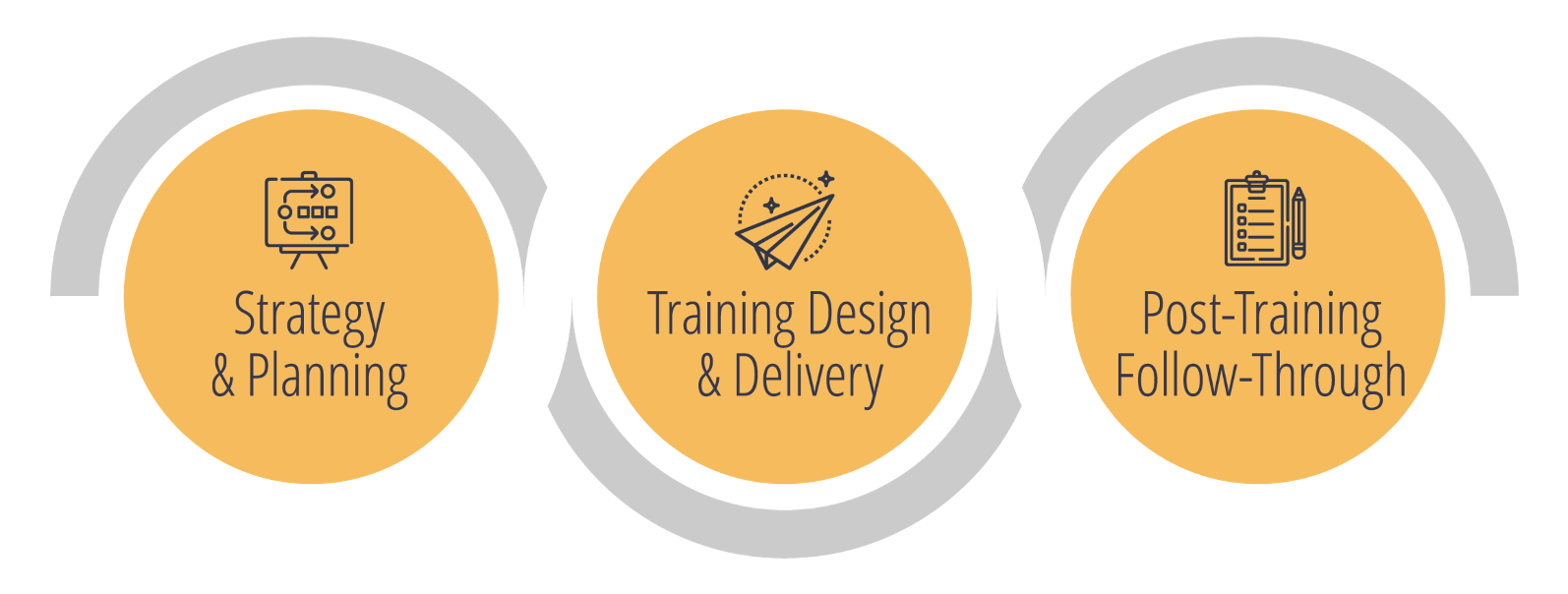Training Best Practices
How to use these documents
The best practices are organized according to these three stages of training.

Reference the best practice document that is most relevant to the stage of the training process that you are in. Some of the best practices will be most helpful when it is necessary to discover and prioritize the most important skill deficiencies and to create an action plan to resolve them. Others will be most helpful when designing and delivering training and support for a particular topic. And others will be most helpful when deciding how to ensure that newly learned skills are employed on the job, post-training.
Why do we need “best practices?”
To reach every child with routine immunization, the people working within an immunization program have to be fluent in a broad range of skills.
EPI program leaders must ensure that every manager, health worker, logistician and staff member has the necessary skills and remove the barriers that may get in the way of people performing at their peak. This requires creating and implementing effective, evidence-based workforce development programs.
For most EPI leaders, this is a challenge. Capacity building is not typically a part of the professional development of EPI professionals. They may lack experience creating and implementing strategic training plans. Fortunately, there are many models, frameworks, and practices available for use, and lessons learned from other sectors that have struggled with similar challenges. These documents organize and package many of these best practices into easy-to-consume, highly practical guides for EPI program leaders. Each one delivers hands-on, practical guidance for engaging in specific capacity-building efforts, as well as links and references that allow the reader to explore a topic in greater depth.
Return to home